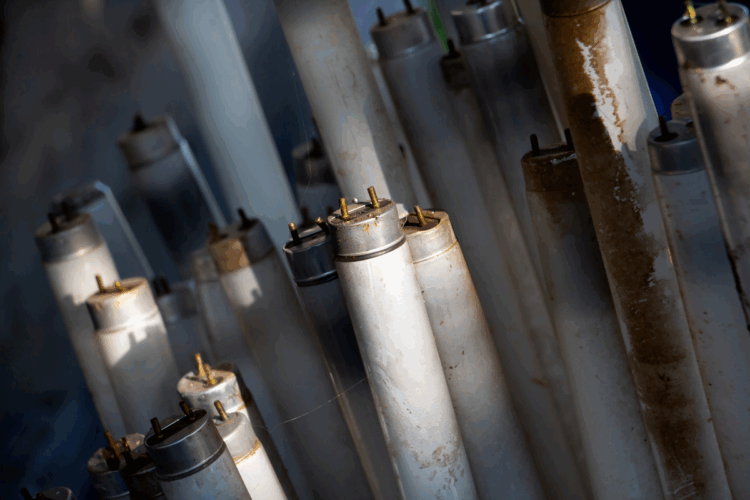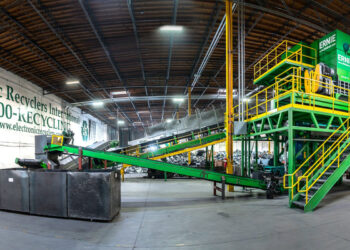A recent report from a U.S. occupational safety unit found significant levels of mercury vapor throughout an Ohio e-scrap and lamp recycling facility, leading the team to provide recommendations for protecting worker health.
The federal Centers for Disease Control and Prevention’s National Institute for Occupational Safety and Health conducted a site visit in April 2023, after the employer expressed concerns about mercury exposure. Over two days, the CDC collected 171 air samples and tested the urine of all employees, according to the report. The facility wasn’t identified in the report.
Of the 14 urine samples, six had mercury levels above recommended exposure limits. In addition, five of six workers in lamp recycling areas had personal air exposure above the recommended levels.
The team found that one worker with no direct involvement in lamp recycling had elevated urine mercury levels. “This finding suggests that contamination of nonproduction areas can affect nonproduction workers,” the report’s authors wrote.
The study noted that elevated mercury levels correlated with worker tenure and primary language. The workers with elevated levels had been working there for a median length of eight months, four of them did not speak English, and five reported symptoms consistent with mercury toxicity.
“These findings align with broader occupational health literature, which identifies language barriers and job tenure as factors influencing health and safety,” according to the study.
Mercury exposure can cause serious health issues including neurological problems and kidney damage. Symptoms include metallic or bitter taste, difficulty thinking and personality changes.
As a result of crushing and processing lamps and other objects that may contain mercury, e-scrap workers face particular risk, the CDC said. Inhaling vapor and dust leads to rapid absorption into the bloodstream, and chronic exposure even at low levels can lead to cumulative effects.
As a result of the study, the team provided several recommendations for mitigating mercury exposure:
- Installing ventilation over the conveyor in the lamp room and conducting maintenance of the facility’s heating, ventilation and air conditioning systems.
- Implementing a workflow progressing from clean to dirty zones to prevent the spread of mercury to clean areas.
- Providing training in workers’ preferred languages.
- Standardizing use of recommended PPE.
- Enforcing safety protocols.
“As the electronic waste recycling industry continues to grow, it is important for employers to evaluate mercury exposure and safeguard employees using a hierarchy of controls,” the authors wrote. “Health departments should consider monitoring occupational mercury exposure in recycling facilities, and clinicians should be aware of the potential for mercury toxicity among workers in these settings.”
Team identifies improper PPE use, language barriers
During the site visit, the CDC observed lamp room workers loading bulbs containing mercury onto a conveyor belt to be crushed. A sorting machine divided the bulbs into glass, metal and mercury dust. The facility also had a retort furnace to extract mercury from dust, but it was not in use at the time. Workers in the battery and ballast areas prepared metal and graphite electrodes to be shipped to other facilities for reuse or recycling.
The workers’ protective equipment included reusable respirators made of a flexible material with a tight seal and replaceable filter cartridges, the CDC noted. However, the investigators observed inconsistent or improper use of recommended PPE throughout the facility. For example, in the lamp room where respirators are mandatory, workers removed their respirators or wore them incorrectly, such as one employee using an N95 respirator with one of the straps cut off, “severely compromising the respirator’s seal.”
The CDC team also observed only sporadic use of gloves and protective clothing. In follow-up interviews, some workers reported challenges with the fit and comfort of their equipment, while others cited a lack of understanding of the proper use and maintenance of equipment.
Language barriers appeared to exacerbate these issues, as training and communication were not always provided in workers’ preferred languages, the team found. Similarly, the workers with the highest levels of mercury tended to be primarily Spanish-speaking.
























